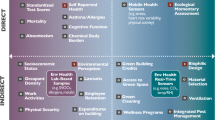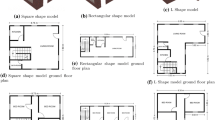Abstract
Energy consumption, especially by the A/C load, represents a major concern particularly in hot arid regions. Selecting the best energy saving option under these conditions is a function of many various variables and thus represents a multi-criteria decision making problem. This study involved building a decision-making model to specify the most important and adequate alternatives to energy conservation in cooling systems in existing buildings in hot arid regions. It examined the best corrective action(s) to be implemented based on a number of criteria that were subject to weighting by experts. The energy saving corrective action options considered were limited to Providing Sufficient Thermal Insulation, Changing Occupant’s Habits, Providing Appropriate Shading, Building Tightness (sealing air leakage), Use of Modern Controllers, and Use of Efficient Equipment. The Analytical Hierarchy Process (AHP) along with its commercial software package, EXPERT CHOICE™, were utilized in this study. The findings of the study indicated that under normal conditions, both Providing Appropriate Shading and Building Tightness represent the best choices of energy saving actions in hot arid regions and that the AHP provides a powerful analysis tool that leads to consistent judgment and reliable decision. In fact, the method demonstrated itself as a fundamental knowledge-based tool that enables quantifying and analyzing experts’ qualitative judgments that lead to sound multi-criteria decision making.
Similar content being viewed by others
References
Al-Masri N, Abu-Hijleh B (2012). Courtyard housing in midrise buildings: An environmental assessment in hot-arid climate. Renewable and Sustainable Energy Reviews, 16: 1892–1898.
AL-Oqla FM, Hayajneh M (2007). A design decision-making support model for selecting suitable product color to increase probability. Paper presented at Design Challenge Conference: Managing creativity, innovation, and entrepreneurship, Jordan.
AL-Oqla FM, Omar AA (2012). A decision-making model for selecting the GSM mobile phone antenna in the design phase to increase overall performance. Progress in Electromagnetics Research C, 25: 249–269.
Al-Widyan MI, AL-Oqla FM (2011). Utilization of supplementary energy sources for cooling in hot arid regions via decision-making model. International Journal of Engineering Research and Applications, 1: 1610–1622.
Asadi E, Da Silva MG, Antunes CH, Dias L (2012a). Multi-objective optimization for building retrofit strategies: A model and an application. Energy and Buildings, 44: 81–87.
Asadi E, da Silva MG, Antunes CH, Dias L (2012b). A multi-objective optimization model for building retrofit strategies using TRNSYS simulations, GenOpt and MATLAB. Building and Environment, 56: 370–378.
Atthajariyakul S, Lertsatittanakorn C (2008). Small fan assisted air conditioner for thermal comfort and energy saving in Thailand. Energy Conversion and Management, 49: 2499–2504.
Chauhan A, Vaish R (2012). Magnetic material selection using multiple attribute decision making approach. Materials & Design, 36: 1–5.
Chen H, Lee W, Yik F (2008). Applying water cooled air conditioners in residential buildings in Hong Kong. Energy Conversion and Management, 49: 1416–1423.
Chow T, Fong K, Chan A, Lin Z (2006). Potential application of a centralized solar water-heating system for a high-rise residential building in Hong Kong. Applied Energy, 83: 42–54.
Dalalah D, AL-Oqla F, Hayajneh M (2010). Application of the Analytic Hierarchy Process (AHP) in multi-criteria analysis of the selection of cranes. Jordan Journal of Mechanical and Industrial Engineering, 4: 567–578.
Dweiri F, AL-Oqla FM (2006). Material selection using analytical hierarchy process. International Journal of Computer Applications in Technology, 26: 182–189.
Enteria N, Mizutani K, (2011). The role of the thermally activated desiccant cooling technologies in the issue of energy and environment. Renewable and Sustainable Energy Reviews, 15: 2095–2122.
Herrero Sola AV, De Miranda Mota CM (2012). A multi-attribute decision model for portfolio selection aiming to replace technologies in industrial motor systems. Energy Conversion and Management, 57: 97–106.
Kaya T, Kahraman C (2011). Multicriteria decision making in energy planning using a modified fuzzy TOPSIS methodology. Expert Systems with Applications, 38: 6577–6585.
Kwan CL (2012). Influence of local environmental, social, economic and political variables on the spatial distribution of residential solar PV arrays across the United States. Energy Policy, 47: 332–344.
Maheshwari G, Al-Ragom F, Suri R (2001). Energy-saving potential of an indirect evaporative cooler. Applied Energy, 69: 69–76.
Masini A, Menichetti E (2012). The impact of behavioural factors in the renewable energy investment decision making process: Conceptual framework and empirical findings. Energy Policy, 40: 28–38.
Ouammi A, Ghigliotti V, Robba M, Mimet A, Sacile R (2012). A decision support system for the optimal exploitation of wind energy on regional scale. Renewable Energy, 37: 299–309.
Parameshwaran R, Karunakaran R, Kumar C, Iniyan S (2010). Energy conservative building air conditioning system controlled and optimized using fuzzy-genetic algorithm. Energy and Buildings, 42: 745–762.
Peik-Herfeh M, Seifi H, Sheikh-El-Eslami M (2013). Decision making of a virtual power plant under uncertainties for bidding in a day-ahead market using point estimate method. International Journal of Electrical Power & Energy Systems, 44: 88–98.
Saaty T (1980). The Analytic Hierarchy Process. New York: McGrawHill.
Scott JA, Ho W, Dey PK (2012). A review of multi-criteria decision-making methods for bioenergy systems. Energy, 42: 146–156.
Sherif A, El-Zafarany A, Arafa R (2012). External perforated window Solar Screens: The effect of screen depth and perforation ratio on energy performance in extreme desert environments. Energy and Buildings, 52: 1–10.
Wang F, Yoshida H, Li B, Umemiya N, Hashimoto S, Matsuda T, Shinbayashi H (2009). Evaluation and optimization of air-conditioner energy saving control considering indoor thermal comfort, In: Proceedings of 11th International IBPSA Conference. Glasgow, Scotland, pp. 88–95.
Wong JK, Li H (2008). Application of the analytic hierarchy process (AHP) in multi-criteria analysis of the selection of intelligent building systems. Building and Environment, 43: 108–125.
Wright JA, Loosemore HA, Farmani R (2002). Optimization of building thermal design and control by multi-criterion genetic algorithm. Energy and Buildings, 34: 959–972.
Yildirim M (2012). Assessment of the decision-making process for re-use of a historical asset: The example of Diyarbakir Hasan Pasha Khan, Turkey. Journal of Cultural Heritage, 13: 379–388.
Author information
Authors and Affiliations
Corresponding author
Rights and permissions
About this article
Cite this article
Al-Widyan, M.I., Al-Oqla, F.M. Selecting the most appropriate corrective actions for energy saving in existing buildings A/C in hot arid regions. Build. Simul. 7, 537–545 (2014). https://doi.org/10.1007/s12273-013-0170-3
Received:
Revised:
Accepted:
Published:
Issue Date:
DOI: https://doi.org/10.1007/s12273-013-0170-3




